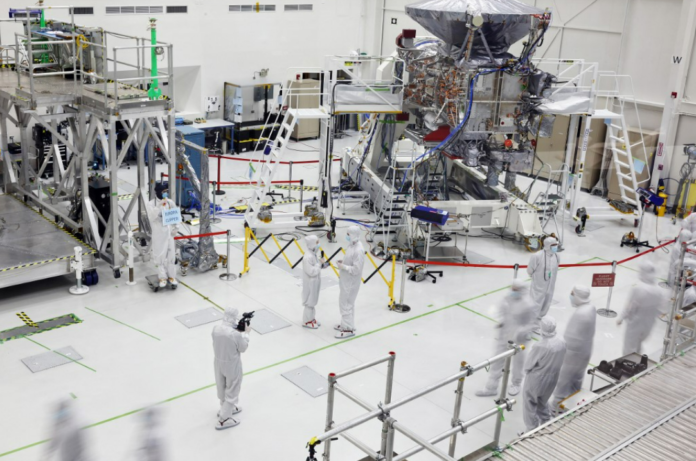PASADENA, United States — In the ongoing search for extraterrestrial life, NASA has revealed the plans for its forthcoming interplanetary probe, the Clipper spacecraft, which will visit Europa, one of Jupiter’s ice moons.
Launched in October, the mission’s goal is to study Europa, which is thought to be one of the closest places in our solar system where life may exist. The mission’s project scientist, Bob Pappalardo, emphasized the central query of NASA: “Are we alone in the cosmos?”
“It would be monumental to discover conditions conducive to life on Europa,” Pappalardo stated to AFP. “It would signify that within our own solar system, Earth and Europa could be home to life forms, shedding light on the prevalence of life in the universe.”
At NASA’s Jet Propulsion Laboratory in California, the $5 billion Clipper spacecraft is presently kept in a strictly regulated “clean room” environment to avoid microbial contamination.
After being moved to Florida’s Kennedy Space Center, Clipper will be launched on a Space X Falcon Heavy rocket to begin a five-year trip that will involve a gravitational boost from Mars to increase velocity.
Clipper is scheduled to go into orbit around Jupiter and Europa by 2031, where it will carry out a thorough investigation of the frozen surface of the moon. The spacecraft is outfitted with tools to examine the composition of Europa’s crust and subsurface, including radar, spectrometers, magnetometers, and cameras.
Although they do not immediately expect to find life, scientists are trying to find situations that may be conducive to it by comparing them to harsh places on Earth. The Europa Clipper mission’s project manager, Jordan Evans, stressed the importance of possible habitats on moons like Europa in extending the hunt for extraterrestrial life.
Navigating through Jupiter’s strong radiation belts and sustaining power supply with its solar array as it gets farther from the Sun are just two of the mission’s many obstacles. The mission team is hopeful about the upcoming scientific discoveries and insights despite these obstacles.
The late 1990s saw the conception of the Europa Clipper mission, which is expected to end in 2034 after achieving its scientific goals. As part of mission disposal procedures, the spacecraft’s last act will be a controlled crash with Jupiter’s largest moon, Ganymede.




